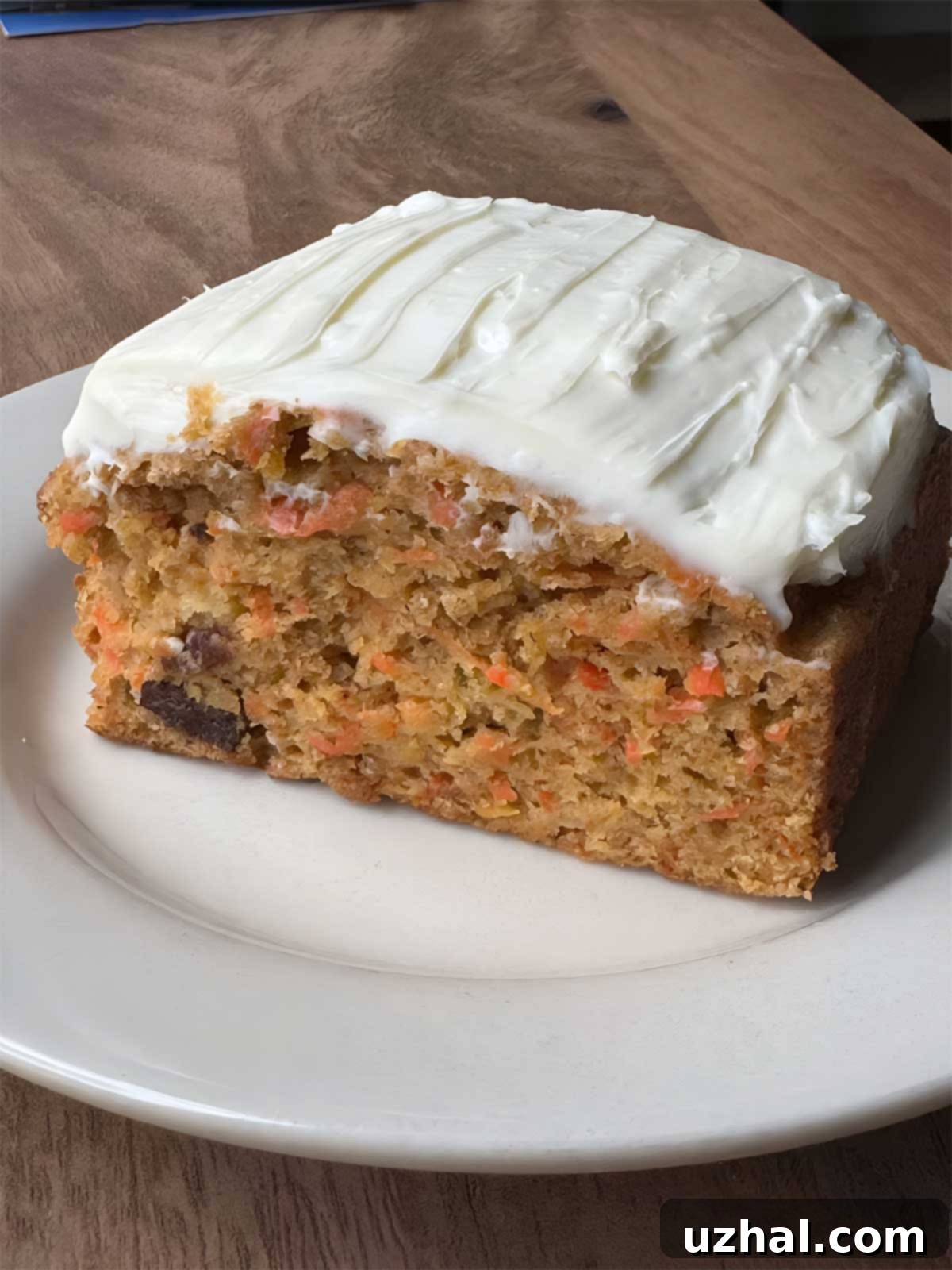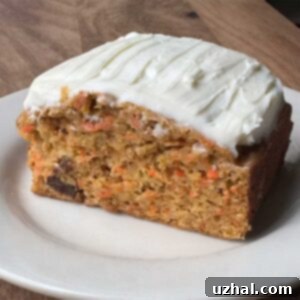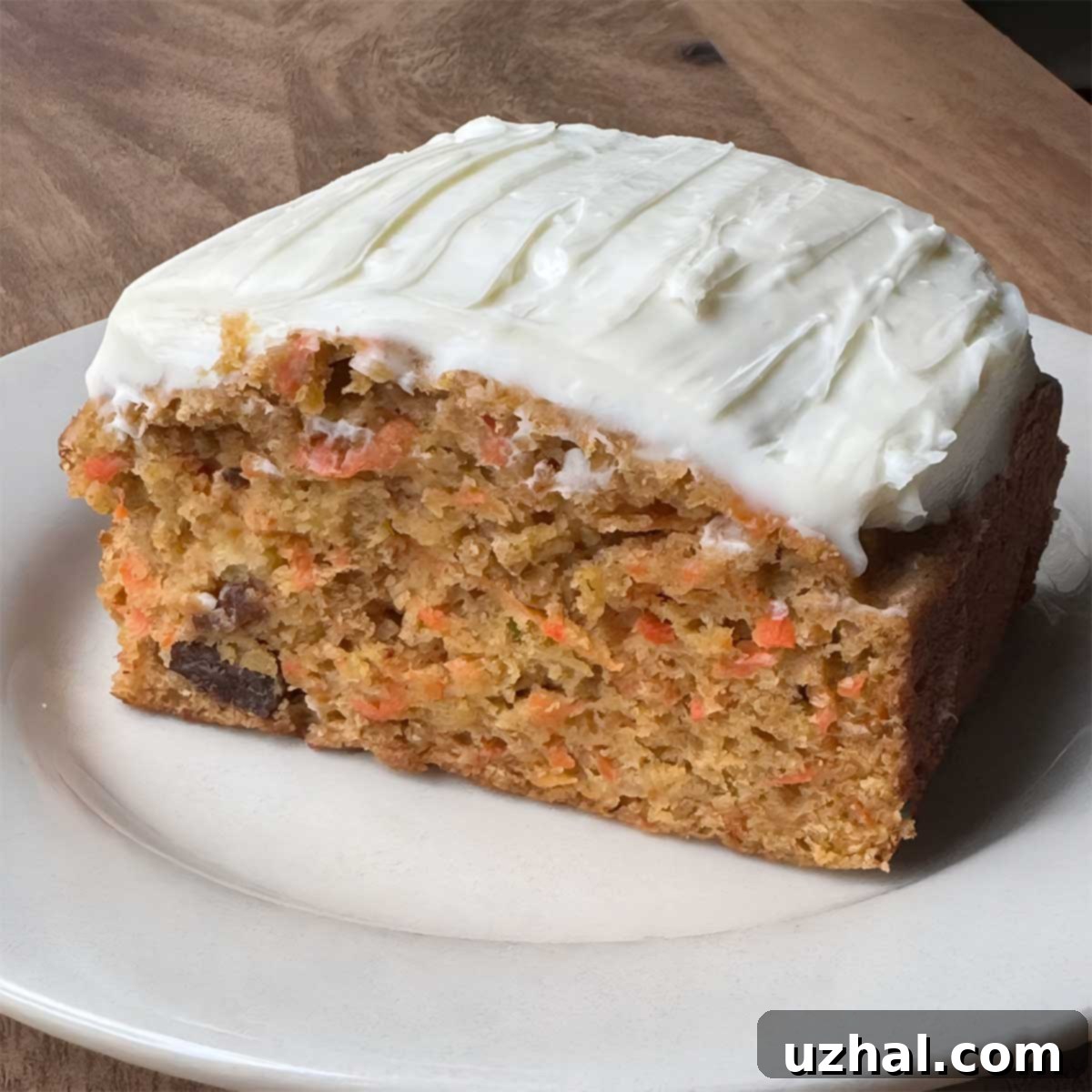Discover Cooking Light’s Best Carrot Cake: A Healthier Twist on a Classic Dessert with Reduced Sugar and Oil
For years, this particular Cooking Light carrot cake recipe has been a cherished favorite, earning its place among the magazine’s all-time best lighter dessert creations. It took some time to fine-tune, but I’m thrilled to finally share the updated version of this classic, bringing it even closer to modern health-conscious baking standards without compromising on its incredible taste and texture. This isn’t just a cake; it’s a testament to how indulgence and wellness can beautifully intertwine, offering a truly satisfying experience with every light and tender bite. Whether you’re a long-time fan of Cooking Light recipes or searching for a delicious, guilt-free treat, this updated carrot cake is sure to become a staple in your kitchen.

Enjoy a Lighter Indulgence: Significantly Less Sugar and Oil in Every Slice
One of the standout features of this updated carrot cake recipe is its commitment to health without sacrificing flavor. Unlike many traditional carrot cakes that can be laden with excessive sugar and oil, this version is remarkably light, calling for only 3 tablespoons of oil and a mere ¾ cup of brown sugar for the entire cake. This thoughtful reduction sets it apart from some of Cooking Light’s earlier creations, where the focus was primarily on lowering fat, sometimes at the expense of sugar content.
Traditional carrot cake recipes often include up to 1 ½ cups of oil and 2-3 cups of sugar, resulting in a dense, calorie-heavy dessert. Our revamped recipe challenges this norm, proving that you can achieve a wonderfully moist crumb and rich flavor profile with far less. The modest amount of oil contributes to moisture without adding unnecessary richness, while the ¾ cup of brown sugar provides just the right touch of sweetness, allowing the natural flavors of the carrots and spices to shine through.
Consider the original icing that accompanied some of these “lighter” desserts – it often featured a surprising 3 ¼ cups of powdered sugar, along with 2 teaspoons of light butter and 6 oz of light cream cheese. While the cake itself might have been low in fat, the frosting could easily negate those benefits. Our updated recipe tackles this head-on, offering a balanced approach to both the cake and its essential cream cheese frosting, ensuring that every component aligns with a lighter, healthier philosophy. This holistic approach ensures a truly guilt-free indulgence.
Exploring Sweetener Alternatives and Flour Innovations for Your Carrot Cake
For those looking to push the boundaries of sugar reduction even further, this recipe offers excellent flexibility. You can effortlessly substitute traditional brown sugar with high-quality alternative brown sugars. Brands like Wholesome Yum Allulose & Monk Fruit Blend or Magic Bake are fantastic choices, providing a similar texture and sweetness profile to brown sugar without the added calories or glycemic impact. When using these blends, you’ll find they behave similarly in baking, ensuring your cake retains its desired moisture and tenderness.
Curiosity led me to experiment with alternative flours, specifically King Arthur’s keto flour. While this particular blend excels in certain applications, such as crisp cookies or specific types of bread, it proved to be a less ideal choice for this carrot cake. The keto flour, designed to mimic gluten, became surprisingly “glutinous” and dense in this cake, resulting in a texture that was too chewy and heavy, rather than the light and tender crumb we aim for. This experience highlights the importance of understanding the unique properties of different flours and how they interact with specific recipes.
However, the journey for alternative flour success continues! I haven’t yet rigorously tested this recipe with almond flour, but my intuition suggests a blend of almond flour, coconut flour, and a touch of psyllium husk could yield excellent results. Almond flour offers a fine texture and healthy fats, while coconut flour, known for its high absorbency, can add structure and a subtle sweetness. Psyllium husk acts as a fantastic binder and moisture retainer in gluten-free baking, potentially counteracting the dryness often associated with alternative flours. This combination promises a moist, structured, and genuinely lighter cake for those following grain-free or lower-carb diets. If you embark on this alternative flour adventure, remember that adjustments to liquid content are often necessary, as gluten-free flours absorb moisture differently.
Versatile Baking: Choosing the Perfect Pan Size for Your Light Carrot Cake
One of the joys of this Cooking Light carrot cake recipe is its incredible adaptability to various baking pans, making it a versatile choice for any occasion. The foundational cake recipe, a tried-and-true classic, performs beautifully whether you prefer a large sheet cake or elegant layers.
Traditionally, this recipe is perfect for a 9×13 inch baking pan, yielding a generous single-layer cake that’s easy to slice and serve at potlucks, family gatherings, or casual desserts. When baked in this size, the cake typically achieves a balanced height and bakes evenly, ensuring a consistent texture throughout. If you opt for this size, the provided frosting recipe is usually sufficient for a lovely top layer.
Alternatively, if you’re aiming for a more formal presentation, you can easily divide the batter between two 8-inch round cake pans to create stunning layers. This setup elevates the cake, making it ideal for birthdays or special celebrations. However, a crucial tip for layer cakes is to ensure you have enough frosting. When creating layers, you’ll need frosting not only for the top but also between the layers and potentially around the sides. Therefore, if you choose the layer cake route, I highly recommend doubling the frosting recipe to ensure ample coverage and a beautifully finished product.
My most recent baking adventure involved dividing the batter among three small loaf pans, which worked wonderfully. This yielded charming individual cakes, perfect for gifting or for smaller households, offering pre-portioned treats that stay fresh longer. This adaptability also extends to making cupcakes or mini bundt cakes; simply adjust the baking time accordingly (cupcakes typically bake for 18-22 minutes) and keep a close eye on them to prevent over-baking. The robust nature of this recipe means you can experiment with confidence, knowing the base will deliver delicious results no matter the shape or size.
The Enduring Appeal of Cooking Light’s Carrot Cake
Beyond its health-conscious modifications, this carrot cake holds a special place in the hearts of many for good reason. It embodies the core philosophy of Cooking Light: creating delicious, satisfying dishes that make healthier eating accessible and enjoyable. The blend of warm spices like cinnamon, nutmeg, and allspice, combined with the sweetness of carrots and the juicy burst of pineapple and raisins, creates a symphony of flavors and textures that is both comforting and exhilarating.
This recipe doesn’t just cut calories; it thoughtfully balances ingredients to ensure a moist, flavorful cake that truly satisfies. The use of buttermilk adds a subtle tang and contributes to the cake’s tenderness, while the grated carrots keep it exceptionally moist. It’s a testament to the fact that “lighter” doesn’t have to mean “less flavorful.” This cake proves that you can enjoy a classic dessert without the heavy feeling, making it a perfect choice for any occasion – from a casual weeknight treat to a festive holiday spread. It’s a recipe that has stood the test of time, continually delighting palates with its perfect blend of wholesome ingredients and undeniable deliciousness.
- Pumpkin Carrot Cake
- Carrot Walnut Muffins
- Carrot Cake Cookie Taste Test
- Chocolate Carrot Brownies
- Two Layer Carrot Cake
Detailed Recipe: Cooking Light Carrot Cake Number 2

Cooking Light Carrot Cake Number 2
Anna
Pin Recipe
Ingredients
For the Cake:
- 1 ¾ cup all-purpose flour, spoon lightly into cup (220 grams, ensures a light cake)
- ⅔ cups whole wheat flour, spoon lightly into cup or weigh (85 grams, adds fiber and a nutty flavor)
- 2 teaspoons baking soda (for rise and tender crumb)
- ¼ teaspoon nutmeg (freshly grated for best flavor)
- ¾ teaspoon allspice (enhances the spice blend)
- 1 teaspoon ground cinnamon (a warming classic)
- ⅛ teaspoon salt (I use ½ teaspoon for a more balanced flavor)
- ¾ cup very tightly packed brown sugar (170 grams, or preferred alternative sweetener)
- 3 tablespoons oil (vegetable, canola, or other neutral oil)
- 2 large eggs (for structure and moisture)
- 2 teaspoon vanilla extract (pure vanilla for best aroma)
- 3 cups grated carrot (shred in processor, then chop for fine texture) (300 grams, ensures moisture)
- 8 oz can of pineapple, drained (save juice and use to soak the raisins for extra flavor)
- ½ cup raisins, soaked in pineapple juice and drained (plump and juicy)
- ⅔ cup buttermilk (or homemade buttermilk substitute)
For the Frosting:
- 8 ounces cream cheese, softened (regular or light, at room temperature)
- 4 tablespoons butter (regular or lighter spread, softened)
- 1 teaspoon vanilla extract (essential for flavor depth)
- 1-2 cups powdered sugar or Wholesome Yum Monk Fruit and Allulose Blend (adjust to your sweetness preference)
- 1 tablespoon whole milk as needed (or cream, for desired consistency)
Instructions
-
Begin by draining the canned pineapple. Reserve the pineapple juice. Place the raisins in a small bowl and pour the reserved pineapple juice over them. Let them soak for approximately an hour to plump up and absorb extra flavor. This is an optional but highly recommended step for juicy raisins!
-
Preheat your oven to 350°F (175°C). Lightly grease and flour a 9×13 inch baking pan, or prepare two 8-inch round cake pans for a layer cake.
-
In a large bowl, whisk together the all-purpose flour, whole wheat flour, baking soda, salt, nutmeg, allspice, and ground cinnamon until well combined. Set this dry mixture aside.
-
In a separate large mixing bowl, whisk together the brown sugar and oil until smooth. Then, gradually whisk in the eggs, one by one, ensuring each is fully incorporated before adding the next. Stir in the vanilla extract. Finally, fold in the grated carrots, drained pineapple, and the plumped, drained raisins.
-
Add the flour mixture and buttermilk alternately to the sugar mixture, beginning and ending with the flour mixture. Mix until just combined – be careful not to overmix, as this can lead to a tough cake.
-
Pour the batter evenly into your prepared pan(s). Bake at 350°F (175°C) for approximately 28 minutes for a 9×13 inch pan, or until a wooden pick inserted into the center comes out clean. If baking in round pans or loaf pans, adjust baking time as needed (likely slightly less for smaller pans). Let the cake cool completely on a wire rack before frosting.
-
While the cake cools, prepare the frosting. In a medium bowl, beat together the softened cream cheese, softened butter, 1 cup of powdered sugar (or alternative sweetener), milk, and vanilla extract until the mixture is light, fluffy, and creamy. Taste test the frosting and add more powdered sugar, one tablespoon at a time, until it reaches your desired level of sweetness and consistency. Once the cake is completely cool, spread the cream cheese frosting generously over the top.
